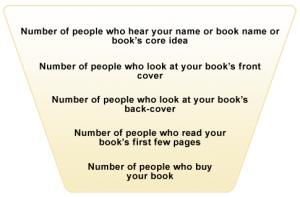A Profitable Idea for Writers
Posted in Book Writing on January 20th, 2012 by adminWritten by: Mary Anne Hahn
To say that I read a lot is perhaps one of the greatest understatements of all time. I read chronically, obsessively. Articles, books, magazines, newspapers, newsletters–you name it. Whenever I am alone, if I’m not actually writing something, I make certain I have something to read with me. I carry a large purse precisely for this purpose; my partner, John, calls the one I hoist on my shoulder these days “carryon luggage,” which should give you some idea of its size ![]() .
.
Although I have a great love for novels, most of my recent reading involves topics that inform and/or inspire. Of special interest to me is anything that can show me new ways (or new slants on old ways) for writers to make a comfortable living using their skills, things that I can share with the readers of my ezine, WriteSuccess.
One area that continues to look especially promising and profitable for writers is ebook writing and publishing.
For readers, the convenience of ebooks can’t be beat; you can purchase your book and be reading it moments later without getting up from your PC or Mac.
For writers, benefits abound. Ebooks are relatively inexpensive and easy to publish. You don’t need to shop around for an agent. There’s no yearlong wait between having your manuscript accepted and seeing it in print. And you can do some neat things with ebooks that you can’t with the traditional print variety–include your own clip art and graphics, add hypertext links right in the pages of your book that take you readers to related Web sites, and other fun online stuff.
You can’t just slap an ebook together and expect to find an instant road to riches, however. Finding and developing a book on a topic that people care about, and will pay for, is key. You will also need to decide whether to self-publish, or go through an ebook publisher. And the success of your ebook lies in how willingly, and how well, you market it.
Probably the most sought-after type of ebooks, and hence the most profitable avenue you can pursue, are the ones that contain information. These run the gamut as far as content, from how to develop a gorgeous perennial garden to how to balance one’s work and family life. If peopleare passionate about the topic, and feel it will enhance their lives, they will buy a book about it.
You say that this information is already readily available for free? You’re right, much of it is. But if you write engagingly and well, and if you can save people hours of searching and sifting through useless information inorder to find what will help them, then you can sell your ebook. Do the research for them, include the best links in your ebook, and you have something of great value to offer.
Let’s take a look at a real life example: Matthew Lesko. For those who haven’t heard of him, he has put together over 70 books on how individuals and businesses can find free US government money, grants and cash loans to finance nearly any venture you can imagine. His books sell like hotcakes, and I daresay he lives comfortably because of that.
Could people have found this information on their own? Absolutely. But are they willing to buy Mr. Lesko’s books if it will save them hours and hours of trial and error research? You bet they will.
If the idea of writing ebooks for fun and profit appeals to you, the absolute best guide on the Web for how to create, publish and sell your own ebook is “Make Your Knowledge Sell!” This ebook is so packed with information; you’ll be biting at the bit to start writing before you’re even a quarter of the way through it. Even visiting the product’s Web site alone will provide you with ideas. You can check out “MYKS!” here: http://myks.sitesell.com/writeangles.html
Another *excellent* resource on this topic is Neil Shearing’s “Internet Success Blueprint.” Written for Internet marketers, it is a superb step-by-step guide to developing and writing ebooks that we non-marketing type writers could definitely learn from. From selecting topics to choosing an electronic publishing format for your books–plus guiding you through the ebook marketing process–this one’s about as complete as you’ll find online. Plus, it’s a fun read. Read more about Neil’s book here: http://scamfreezone.com .cgi/176198
If you love to write and want to make your living from it, I strongly believe that ebooks are a fantastic way to go.
Here’s to your writing success!
————————-
ABOUT THE AUTHOR
Mary Anne Hahn is editor and publisher of WriteSuccess, the free biweekly ezine of ideas, information and inspiration for people who want to pursue SUCCESSFUL full-time writing careers.To subscribe, mailto:[email protected] .
Related Posts
Raise Your Writing That Extra Notch
Write Your Book for ONE Audience, but for MANY Markets
Connect to us via our other social media buttons. Just pick your click!













